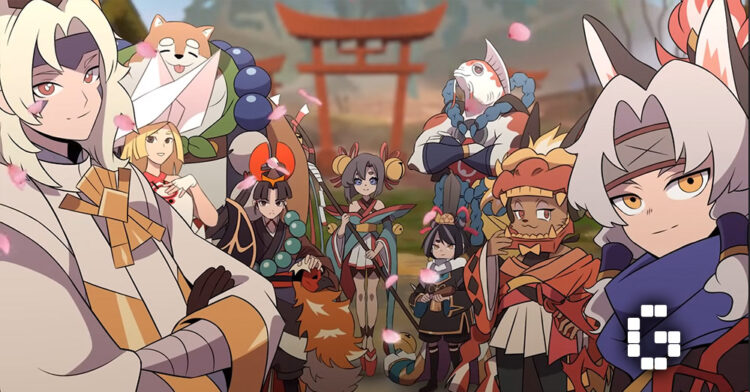During a recent Bandai Namco Entertainment media event, we had the chance to try out Towa and the Guardians of the Sacred Tree to give you a preview of what to come from this Japanese inspired roguelike. The hands-on demo focused on the 20-minute combat experience, showcasing the game’s unique weapon durability system and character switching mechanics. However, new details also revealed the extensive village hub systems that weren’t part of the playable demo, giving us a fuller picture of what to expect from this adventure.
Combat Systems Put to the Test
The demo highlighted the game’s core combat mechanics, which revolve around smart weapon management. Players have two types of attacks, but using them makes swords dull over time. The key is mastering the “quick draw” – a dash attack that resharpens your weapon and restores your damage potential. This creates a rhythm where players must balance offense with tactical weapon care.


Combat works as a duo system where you pick one character as your main fighter and another for support. The demo featured four different characters, each with distinct playstyles. Origami specializes in ranged attacks, which can be tricky since her skills might miss enemies that get too close. Characters also have different dash charges – Nishiki (the Koi guardian) only has one charge, making him more challenging to use as your primary attacker.
Each completed map rewards players with “grace” – special blessings that enhance abilities. Some blessings can stack or upgrade existing ones, while others completely replace your current set. Maps also feature branching paths marked with different symbols, leading to unique rewards or map types.

The demo proved easy to pick up but offered depth for mastery. The colorful cast provides plenty of character combinations to explore, with each guardian offering a very different playstyle experience.
Village Systems Beyond Combat
While the demo focused purely on combat, the full game promises much more through Shinju Village’s various facilities. The Shinju Shrine serves as your main upgrade hub, where you can alter your chances of finding better Graces in dungeons or acquire passive skills for tougher challenges.
The Blacksmith allows you to forge, dismantle, or equip swords for Tsurugi characters. Given the importance of weapon management in combat, having variety becomes crucial for different situations.

At the Eureka Tower, you can purchase and equip inscriptions that boost Kagura’s staff power, focusing on enhancing support characters who wield staffs rather than swords. The Eternal Flame Dojo offers the most character customization, letting you improve guardian stats, change equipment, and unlock or assign spells.
Time and Characters
The village features a unique time progression system where Magatsu’s influence has stopped time’s flow. As you clear dungeons and restore mana by defeating enemies, time begins moving again, allowing the village to grow and residents to age and pass down wisdom.


Key villagers include Tanzo (voiced by Kosuke Goto), the gentle giant blacksmith who cares for village children; Saku (voiced by Romi Park), a mysterious performer whose songs restore forgotten memories; chatty researcher Raylee (voiced by Kiyoko Miyazawa); and serious dojo master Futo (voiced by Yasuhiro Mamiya).
After our time and preview of the game, Towa and the Guardians of the Sacred Tree aims to create a living world that evolves beyond simple dungeon runs, combining meaningful progression with character relationships and timeline-spanning storytelling.


![[GUIDE] Death Stranding 2: On the Beach – Essential Tips for New Players](https://cdn.gamerbraves.com/2025/06/DS2-Beginner-Tips_Guide_FI-360x180.jpg)









![[ASIA EXCLUSIVE] Bringing Back a Classic: Inside the Making of FINAL FANTASY TACTICS – The Ivalice Chronicles](https://cdn.gamerbraves.com/2025/06/FFT-Ivalice-Chronicles_Interview_FI2-360x180.jpg)


![[EXCLUSIVE] Gearbox Executives Share Details on Borderlands 4 – Story, Weapons, and Lessons Learned](https://cdn.gamerbraves.com/2025/06/Borderlands-4_Interview_FI-360x180.jpg)
![[EXCLUSIVE] Wan Hazmer Reveals How No Straight Roads 2 Expands Beyond Vinyl City with Shueisha Games](https://cdn.gamerbraves.com/2025/06/NSR2_Interview_FI-360x180.jpg)




![[GUIDE] Death Stranding 2: On the Beach – Essential Tips for New Players](https://cdn.gamerbraves.com/2025/06/DS2-Beginner-Tips_Guide_FI-350x250.jpg)






